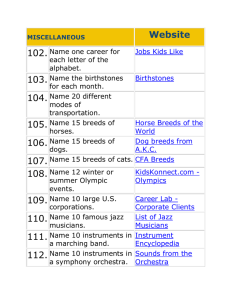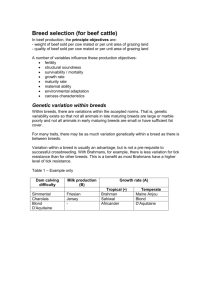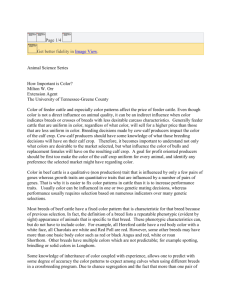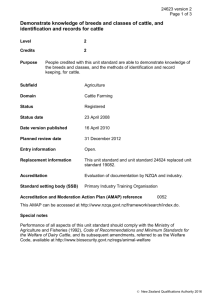Hamilton et al (King..
advertisement
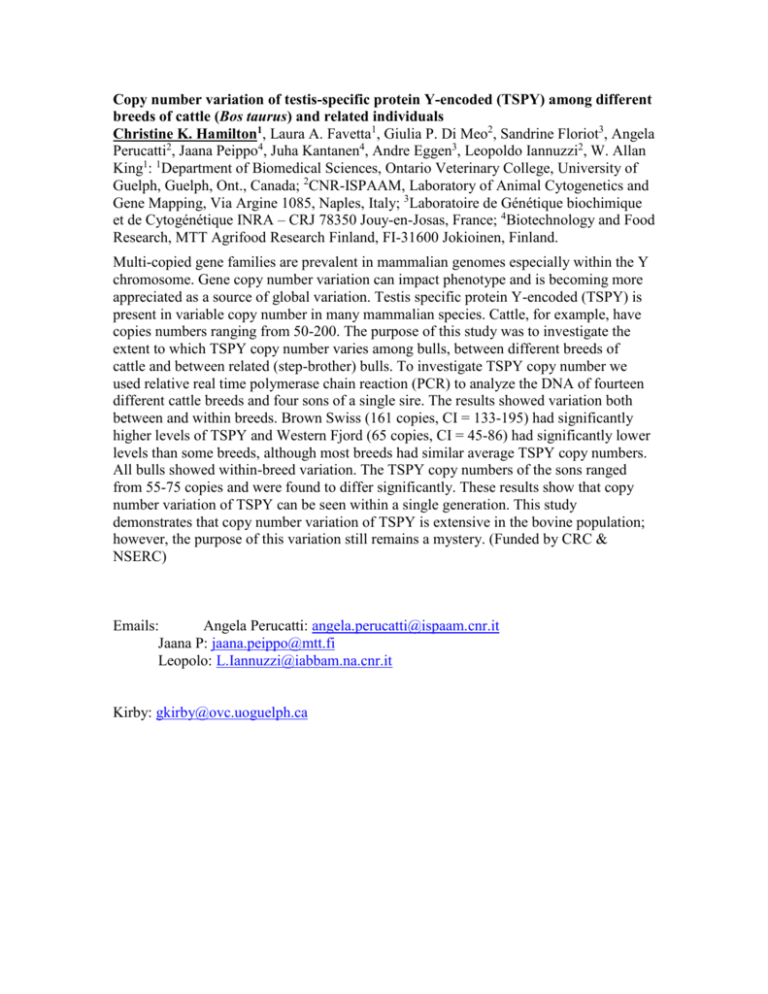
Copy number variation of testis-specific protein Y-encoded (TSPY) among different breeds of cattle (Bos taurus) and related individuals Christine K. Hamilton1, Laura A. Favetta1, Giulia P. Di Meo2, Sandrine Floriot3, Angela Perucatti2, Jaana Peippo4, Juha Kantanen4, Andre Eggen3, Leopoldo Iannuzzi2, W. Allan King1: 1Department of Biomedical Sciences, Ontario Veterinary College, University of Guelph, Guelph, Ont., Canada; 2CNR-ISPAAM, Laboratory of Animal Cytogenetics and Gene Mapping, Via Argine 1085, Naples, Italy; 3Laboratoire de Génétique biochimique et de Cytogénétique INRA – CRJ 78350 Jouy-en-Josas, France; 4Biotechnology and Food Research, MTT Agrifood Research Finland, FI-31600 Jokioinen, Finland. Multi-copied gene families are prevalent in mammalian genomes especially within the Y chromosome. Gene copy number variation can impact phenotype and is becoming more appreciated as a source of global variation. Testis specific protein Y-encoded (TSPY) is present in variable copy number in many mammalian species. Cattle, for example, have copies numbers ranging from 50-200. The purpose of this study was to investigate the extent to which TSPY copy number varies among bulls, between different breeds of cattle and between related (step-brother) bulls. To investigate TSPY copy number we used relative real time polymerase chain reaction (PCR) to analyze the DNA of fourteen different cattle breeds and four sons of a single sire. The results showed variation both between and within breeds. Brown Swiss (161 copies, CI = 133-195) had significantly higher levels of TSPY and Western Fjord (65 copies, CI = 45-86) had significantly lower levels than some breeds, although most breeds had similar average TSPY copy numbers. All bulls showed within-breed variation. The TSPY copy numbers of the sons ranged from 55-75 copies and were found to differ significantly. These results show that copy number variation of TSPY can be seen within a single generation. This study demonstrates that copy number variation of TSPY is extensive in the bovine population; however, the purpose of this variation still remains a mystery. (Funded by CRC & NSERC) Emails: Angela Perucatti: angela.perucatti@ispaam.cnr.it Jaana P: jaana.peippo@mtt.fi Leopolo: L.Iannuzzi@iabbam.na.cnr.it Kirby: gkirby@ovc.uoguelph.ca



